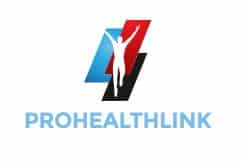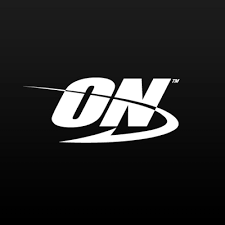Navigating Occupational Health and Safety Issues in the Workplace
Navigating Occupational Health and Safety Issues in the workplace In today’s fast-paced and competitive business world, occupational health and safety (OHS) have become increasingly important. Ensuring the well-being of employees and maintaining a safe work environment is not only a legal requirement in most countries but also a moral obligation for employers. This blog will delve into the significant occupational health and safety issues in the workplace, exploring their causes, and consequences, and how organizations can address them to create safer, more productive, and employee-centric work environments.
1. Work-Related Accidents
Work-related accidents are a prominent occupational health and safety issue that affects countless employees each year. These accidents encompass a wide range of incidents, from minor slips, trips, and falls to more severe accidents involving machinery malfunctions, chemical spills, and construction-related mishaps. The consequences of these accidents can vary from minor injuries to fatalities, causing physical and emotional trauma to employees and resulting in financial losses for the organization.
Work-related accidents occur due to various factors, including inadequate safety training, equipment malfunction, and poor workplace conditions. Inadequate risk assessment and oversight often play a role in these accidents, as well. Employers must take proactive measures to reduce the risk of work-related accidents and their associated human and financial costs.
Prevention and mitigation strategies:
- Regular safety training and awareness programs: Employers should provide comprehensive training to employees about potential hazards, safe work practices, and emergency procedures. Regular safety drills and refresher courses can help reinforce this knowledge.
- Maintenance of equipment and machinery: Regular inspections and maintenance of tools, equipment, and machinery are essential for preventing accidents caused by equipment malfunctions.
- Adequate personal protective equipment (PPE): Employers must provide appropriate PPE and ensure that employees wear it consistently, reducing the risk of injury.

2. Occupational Diseases
Occupational diseases are often referred to as “silent killers” because they may not manifest symptoms until years after exposure. Common examples include respiratory illnesses resulting from exposure to toxic fumes, repetitive stress injuries, and mental health issues such as burnout or anxiety. Employers need to recognize the long-term health risks their employees face and take steps to reduce the risk of these illnesses.
Occupational diseases can result from various workplace factors, such as exposure to harmful chemicals, poor ergonomic design, and excessive workload. Prevention and mitigation strategies for these health issues should be an integral part of an organization’s OHS program.
Prevention and mitigation strategies:
- Regular health assessments and screening: Periodic health assessments can help identify potential issues early, allowing for timely intervention. Encourage employees to report symptoms promptly.
- Providing ergonomic workspaces: Properly designed workstations and equipment can significantly reduce the risk of repetitive stress injuries and musculoskeletal disorders.
- Promoting a healthy work-life balance: Encouraging a balance between work and personal life can help mitigate mental health issues, reduce stress, and enhance overall well-being.
3. Workplace Stress
Workplace stress has become a growing concern as employees face increasing demands and pressures in modern workplaces. High levels of stress can lead to mental health issues, absenteeism, and reduced productivity, affecting both the employees’ well-being and the organization’s bottom line.
Workplace stress can be caused by various factors, including heavy workloads, unrealistic expectations, lack of support, and a poor work environment. Employers need to address the root causes and create a work culture that supports employees’ mental health.
Prevention and mitigation strategies:
- Promoting a positive work culture: Fostering a culture of support, respect, and open communication can significantly reduce stress levels within the organization.
- Encouraging open communication: Establishing channels for employees to express their concerns, ideas, and feedback can help identify and address stressors early on.
- Offering stress management programs and resources: Providing resources such as stress management workshops, counseling services, and employee assistance programs can help employees cope with and manage stress effectively.
4. Inadequate Training and Education
Insufficient training and education on safety protocols and procedures are a common cause of accidents and injuries in the workplace. Employees must be well-informed about potential hazards and how to prevent them. Inadequate training can lead to mistakes, accidents, and increased risks for everyone in the organization.
Prevention and mitigation strategies:
- Comprehensive safety training: Employers should provide thorough safety training for all employees, covering essential topics such as hazard identification, safe work practices, and emergency response procedures.
- Regular refresher courses: Safety knowledge can fade over time. Regular refresher courses and quizzes can help keep safety practices at the forefront of employees’ minds.
- Ensuring access to safety manuals and guidelines: Organizations should make safety manuals, guidelines, and procedures readily available to all employees. Access to information is crucial for employees to make informed decisions.

5. Inadequate Emergency Response Plans
Effective emergency response plans are crucial for ensuring the safety of employees during unforeseen events. Inadequate planning can lead to chaos and further endanger the safety of employees in emergency situations.
Prevention and mitigation strategies:
- Regular drills and exercises: Conducting regular emergency drills and exercises ensures that employees are familiar with the response procedures and can react efficiently during actual emergencies.
- Communication systems for emergencies: Employers should establish clear and reliable communication systems, both internal and external, to ensure that information flows seamlessly during emergencies.
- First-aid training for employees: Having employees trained in basic first-aid and CPR can be a lifesaver in emergencies, especially in cases of injuries or health-related incidents.
6. Inadequate Safety Equipment and Facilities
Lack of proper safety equipment and facilities can increase the risk of accidents and injuries. Employers must ensure that the workplace is equipped with the necessary safety measures.
Prevention and mitigation strategies:
- Regular inspections for safety compliance: Conduct regular safety inspections to identify and rectify any deficiencies in safety equipment and facilities.
- Investment in high-quality safety equipment: Cutting corners on safety equipment can lead to accidents. Employers should invest in high-quality, reliable safety gear.
- Prompt maintenance and repair: Ensure that any damaged safety equipment or facilities are repaired or replaced promptly to prevent accidents and injuries.
7. Non-Compliance with Regulations
Failure to comply with OHS regulations can result in severe legal and financial consequences for businesses. Staying updated with local and national OHS laws is essential to ensure compliance and protect both employees and the organization.
Prevention and mitigation strategies:
- Regular audits and assessments: Conduct regular audits to assess the organization’s compliance with OHS regulations and make necessary improvements.
- Legal compliance training for management: Train management and leadership teams in OHS laws and regulations to ensure that the organization’s policies and practices align with legal requirements.
- Establishing a dedicated OHS department: Having a dedicated OHS department or officer responsible for overseeing compliance and implementation of safety measures can help ensure that the organization stays within legal boundaries.
Conclusion
Occupational health and safety issues in the workplace are not just legal obligations; they are essential for creating a healthy, productive, and ethical work environment. Employers have a responsibility to ensure the safety and well-being of their employees. By addressing these OHS issues
Table of Contents
Guardian 10918 Halo Big Block Cable SRL – 65 ft, Self Retracting Lifeline with Swivel Top, Swivel Hook
Corrosion-resistant stainless steel and aluminum components result in longer life
Dual braking mechanism operates quickly, arresting a fall within two feet while giving flexibility for use
Dual-swivel design allows for greater mobility while keeping the lifeline in good working condition
Price: $723.05
FallTech 7465A Temporary Window/Door Opening Anchor for Fall Arrest/Restraint, Adjusts to Door/Window Openings from 21…
Lightweight aluminum body with steel adjustment feet
Durable steel and aluminum construction for secure attachment and extended service life
Protective foot pads on main body and final adjustment leg
Price: $883.63
PeakWorks V84014025 – Snap Hook & Back Splice – 25′ (7.6 m), 5/8″ Polysteel Rope – Fall Protection Vertical Lifeline
All PeakWorks lifelines are certified to CSA Z259.2.5-2012 and meet ANSI Z359 standards
Lifelines are specially designed from rope made using high-strength polysteel
Polysteel is an extruded co-polymer fibre that yields an extremely high-strength, lightweight rope with excellent resistanceto acids and alkalis
Price: $87.50
Guardian 04640 Kernmantle Horizontal Lifeline System with Tensioner, 2 O-Rings, 2 Web Slings 2 Steel Carabineers & SOS…
2 person system for fall arrest
Temporary reusable system
Includes Kernmantle Rope, SOS Carrying/storage bag, two O-rings, two Anchorage Web Slings, Rope Tensioner, and two Self-Locking Carabineers
Price: $1,660.06


















